WordPress 6.8: Release Date, Features & Compatibility
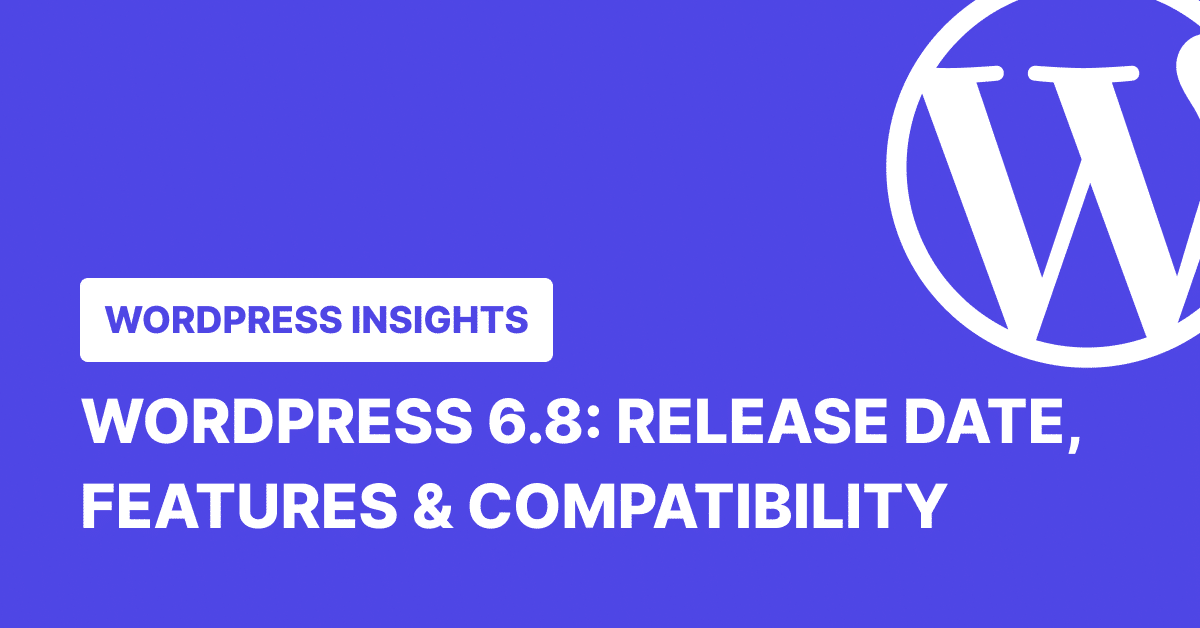
WordPress 6.8 launches on April 15, 2025, and is expected to improve website performance, security, and usability. While this update doesn’t reinvent WordPress, it introduces practical enhancements to make websites faster, safer, and easier to manage.
Let’s see what’s changing and how these updates can benefit you and your site.
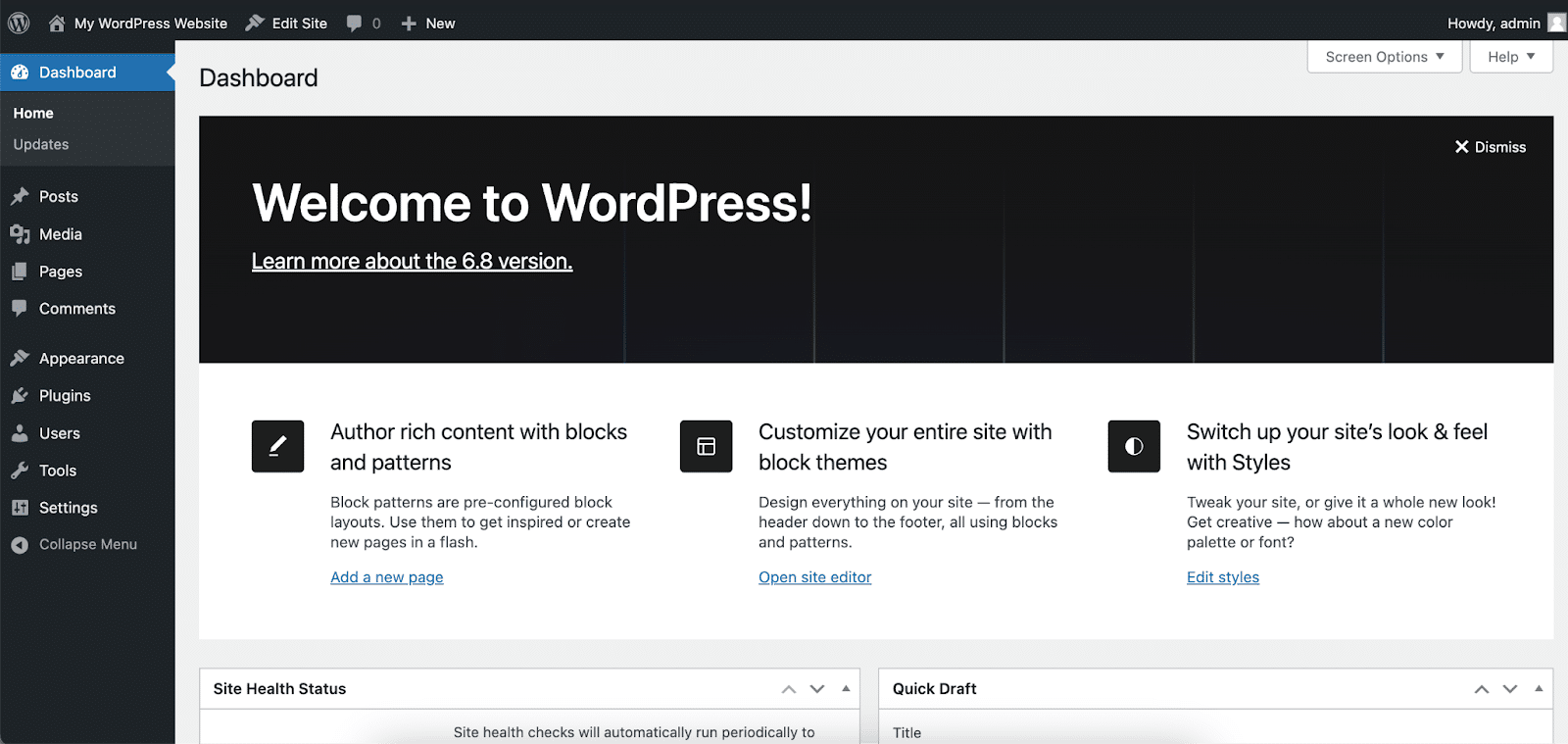
TL;DR
What’s New:
- Faster load times with speculative loading
- Stronger security with bcrypt and BLAKE2b hashing
- Better design tools
- More control over Query Loop and global styles
- Accessibility upgrades
- New Block Hooks and Block Bindings APIs for developers
Who Should Upgrade:
- ✅ Modern sites with updated themes, plugins, and custom code
- ⚠️ Reconsider if you rely on legacy plugins or outdated code
How to Prepare:
- Back up your site
- Check plugin/theme compatibility
- Test on a staging environment
- Use tools like WP Umbrella to expedite pre-checks and backups
What To Expect From WordPress 6.8
1. Performance To Get a Major Upgrade with Speculative Loading 🚀
One of the most exciting additions in WordPress 6.8 is the integration of speculative loading—a powerful performance enhancement that anticipates user behavior to load pages faster.
By prefetching URLs in the background based on where users are likely to click next, speculative loading reduces wait times and improves the Largest Contentful Paint—a key metric in Google’s Core Web Vitals. This will result in a noticeably smoother, more responsive experience, especially for content-heavy websites.
Behind the scenes, WordPress is building this on top of the Performance Team’s Speculative Loading plugin. It’ll run in a “conservative” mode by default to avoid conflicts or unnecessary resource usage.
For developers who want more control, a new filter — wp_speculation_rules_configuration — will let them customize how speculative loading behaves.
This feature is handy for publishers, blogs, and media sites where users navigate multiple pages. By reducing load times and improving perceived speed, it will boost engagement and support better SEO performance.
2. Design Tools: Style Book and Global Styles Panel
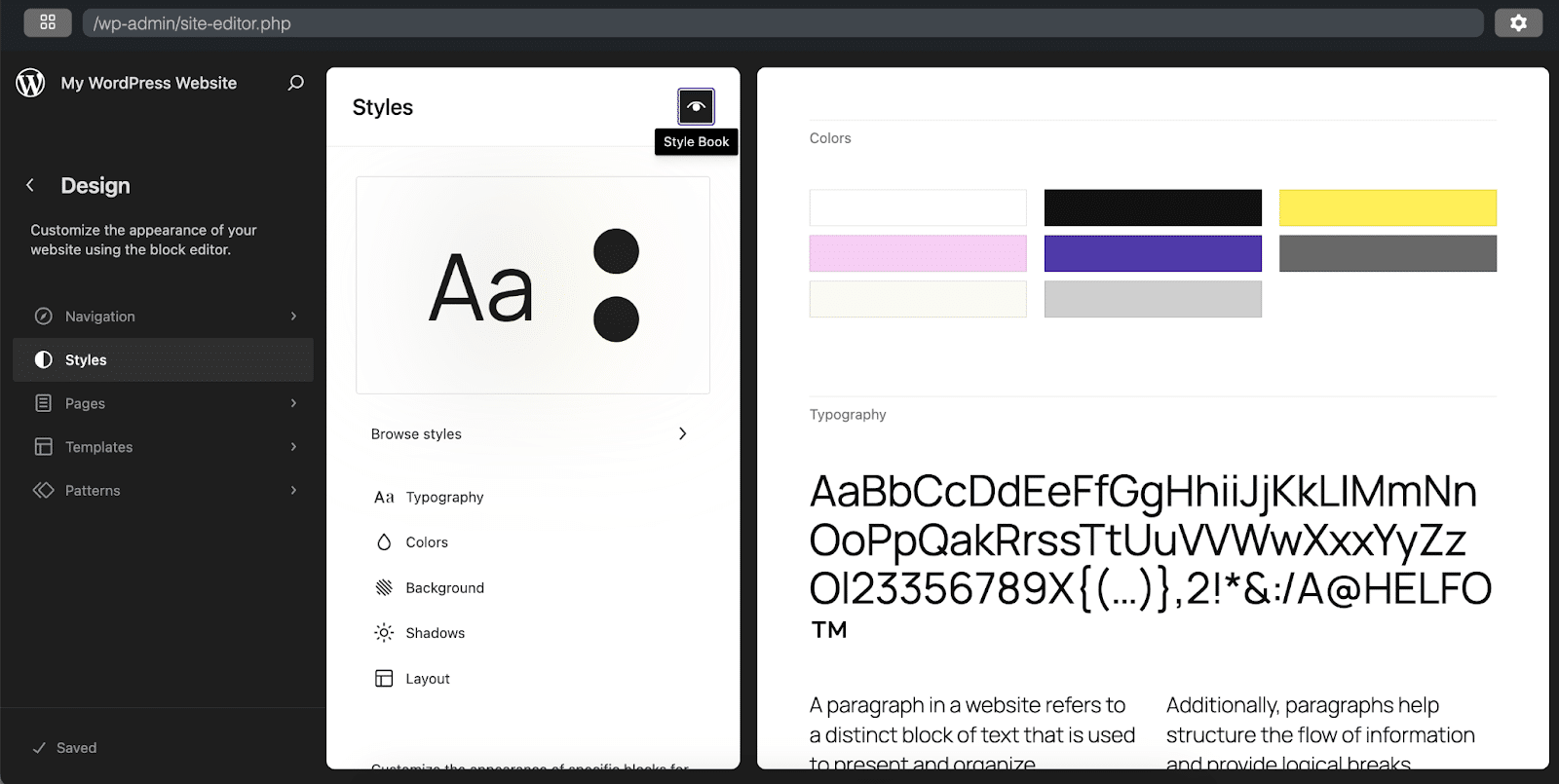
Designing in WordPress is about to get more intuitive, thanks to the updated Style Book.
The Style Book is a go-to tool for previewing and managing block styles. Initially available for block themes, it will now be available for classic themes (ones that don’t support the full site editor).
Style Book now organizes theme customization in a way that feels natural and helps you create consistent, professional-looking designs with less effort. Now, as you navigate through typography, color, and block-specific settings, the corresponding sections will automatically activate—making it easier to focus on what you’re editing without getting lost in the interface.
Another noticeable improvement is how the panel expands. Instead of replacing the current view, it now slides out from left to right, giving you a clearer path through the Site Editor—all while keeping your live preview in sight on the right.
You’ll also find labeled blocks and improved previews, making block-level adjustments faster and more straightforward. Global styling is also easier to manage and maintain a consistent design across the site with minimal effort.
The pattern organization has been moved under Appearance >> Editor, so it’s easier to view and manage all your site’s patterns in one place. This is especially useful when working with templates and layouts.
These design updates will significantly benefit non-developers and beginners by helping them design their websites easily without technical expertise.
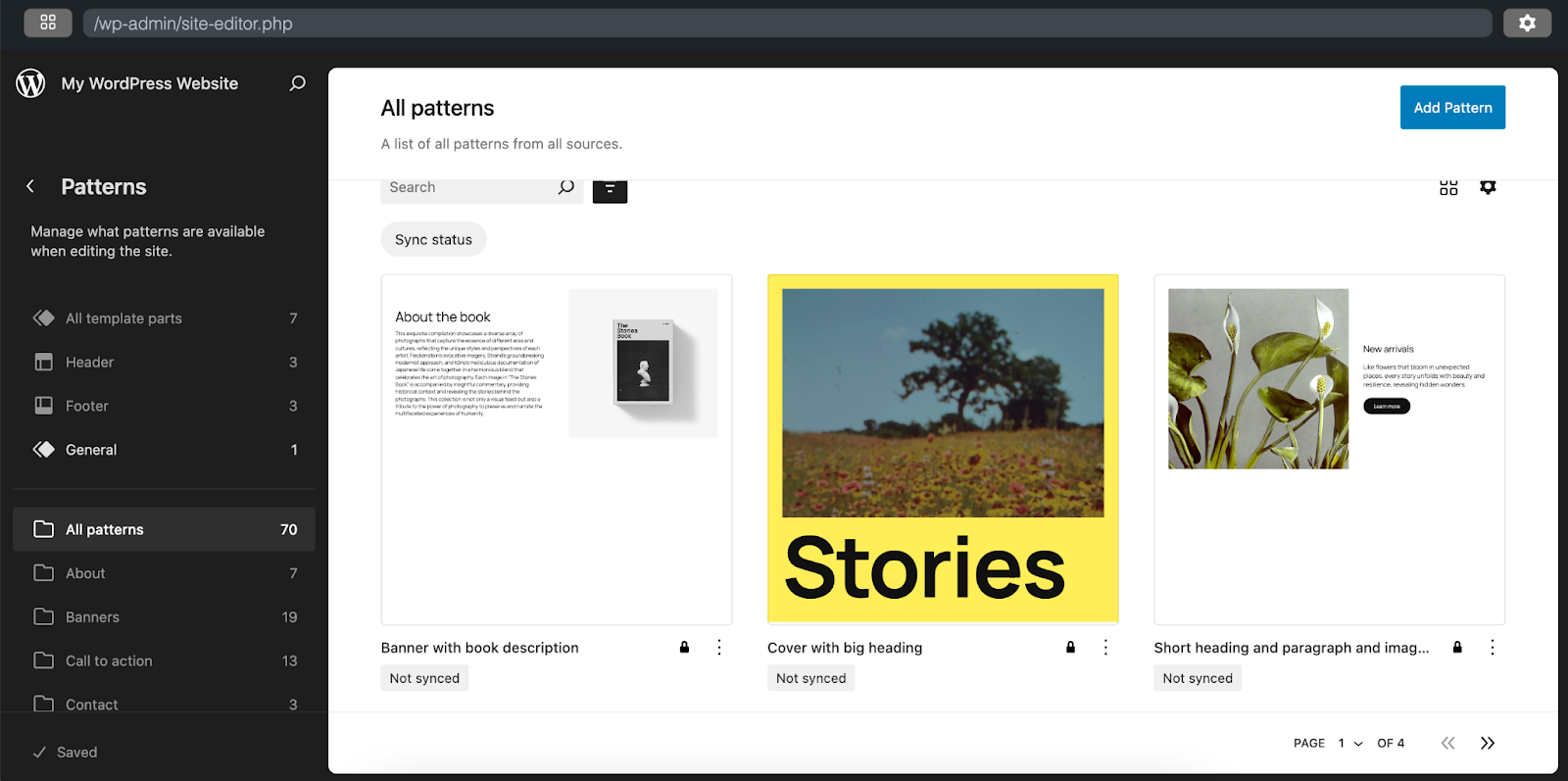
3. Stronger Password Protection with Bcrypt and BLAKE2b 🔐
WordPress 6.8 will strengthen password security by updating the hashing algorithm from phpass portable hashing to bcrypt. This critical change makes password hashes more difficult to crack and provides better protection against modern hacking methods.
The security upgrade doesn’t stop there. WordPress 6.8 also shifts application passwords, user password reset keys, personal data request keys, and recovery mode keys from phpass to BLAKE2b hashing via Sodium, a faster and more secure cryptographic option.
You won’t need to take any action when this update rolls out. Existing sessions will remain valid, and users won’t be forced to change their passwords. The system will automatically rehash passwords with bcrypt when users log in or update their credentials.
Application passwords and security keys created before WordPress 6.8 will continue to work without automatic rehashing. Post passwords will keep using phpass hashing while developers conduct further research on the best approach.
These improvements help WordPress meet current security standards while reducing vulnerabilities in password storage. The update also enhances compliance with GDPR and other data protection regulations to ensure better user data protection.
4. More Control with an Improved Query Loop ♾️
The Query Loop block—a favorite among content creators for displaying posts dynamically—is getting a subtle but highly requested update in WordPress 6.8.
Until now, sticky posts were always prioritized at the top of a Query Loop. That’s useful for announcements or featured posts, but it often got in the way of layouts that needed strict sorting by date, category, or tag. With WordPress 6.8, you’ll now have the option to ignore sticky posts entirely—giving you finer control over how content appears.

This small change makes a big difference for site owners who want consistent ordering in blog sections, archives, or dynamic landing pages.
In addition, WordPress 6.8 introduces expanded filtering options—so you can now sort content by year, tags, and categories with greater precision. Spacing controls have also been refined, so it is easier to create cleaner, more balanced layouts.
Combined, these enhancements make the block editor feel more polished and flexible—especially when designing interactive or content-rich pages. Whether you’re fine-tuning a homepage or organizing an archive, you’ll have more tools at your fingertips to control how everything fits together.
5. Better Accessibility for a More Inclusive Web ♿
WordPress 6.8 is making the platform more inclusive with a new batch of accessibility improvements—making sites easier to use and more welcoming for everyone.
One of the big ones is enhanced keyboard navigation and screen reader support so users who rely on assistive tech have a more consistent experience. It also makes WordPress sites WCAG compliant, and it’s good for SEO, too, as search engines favor user-friendly experiences.
Another one is the introduction of accessible tooltips to WordPress Core. These tooltips use semantic HTML and ARIA attributes so they’re readable by screen readers and offer helpful guidance within the UI without breaking usability. It’s a small change but a big impact—especially for visually impaired users navigating complex screens.
Behind the scenes, developers also benefit. The new tooltip system provides a reusable, standardized API, reducing the need for custom workarounds and encouraging consistency across themes and plugins.
WordPress 6.8 will also clean up redundant title attributes across various elements to further improve screen reader compatibility—another thoughtful step toward making the web more accessible by default.
There’s also better handling of multilingual error messages, ensuring users across different locales get clearer, more accurate feedback when something goes wrong.
6. New Developer Tools 👨💻
WordPress 6.8 is also delivering some powerful new tools for developers—focused on flexibility, extensibility, and faster workflows.
At the heart of this release are two major additions: the Block Hooks API and the Block Bindings API.
The Block Hooks API allows developers to dynamically inject blocks into block-based themes—opening up new ways to extend functionality without manually editing templates. WordPress 6.8 builds on this with expanded support, making it easier to programmatically control where and when blocks appear.
Alongside that, the new Block Bindings API gives developers the ability to bind block attributes to dynamic data sources to make blocks smarter, more interactive, and easier to integrate with real-time content.
These APIs make WordPress 6.8 especially appealing for teams building with modern JavaScript frameworks or working in headless WordPress environments.
WordPress 6.8 Compatibility With Older Versions
Not every WordPress site is starting from the same place—and that matters when you’re upgrading to 6.8. Here’s a quick breakdown of how smoothly the update will go, depending on your current version.
| Your Current WP Version | Compatibility With 6.8 | What to Expect |
| 6.5 – 6.7 | ✅ Best Compatible | Minimal adjustments needed. Most features work out of the box. |
| 5.8 – 6.4 | ⚠️ Partially Compatible | Some features may require minor fixes or updates. |
| 5.7 and earlier | ❌ Risky Compatibility | High risk of security and functionality issues. Major updates advised. |
Should You Upgrade to WordPress 6.8?
Before upgrading, it’s worth checking if your current setup is a good fit for WordPress 6.8. Here’s a quick breakdown of who should move forward—and who might want to hold off for now.
| ✔ Recommended For | ⚠ Not Recommended For |
| Users who want better performance, security, and editing tools. | Sites using outdated plugins or themes that haven’t been maintained. |
| Website owners with modern setups and regularly updated tools. | Websites relying on legacy custom code that may conflict with bcrypt. |
A Quick Heads-Up
Before upgrading to WordPress 6.8, give your website a quick performance check, clean up old plugins, and ensure everything’s running smoothly.
If you want to speed things up, WP Umbrella can help. It flags outdated plugins and themes, lets you back up your site in one click, checks your PHP version, and monitors your site’s overall health. Bonus: it automates most of this work for you!
Get Your WordPress Site Ready for 6.8
Run performance checks, clean up outdated plugins and back up your site for a stress-free upgrade experience
Get Started for free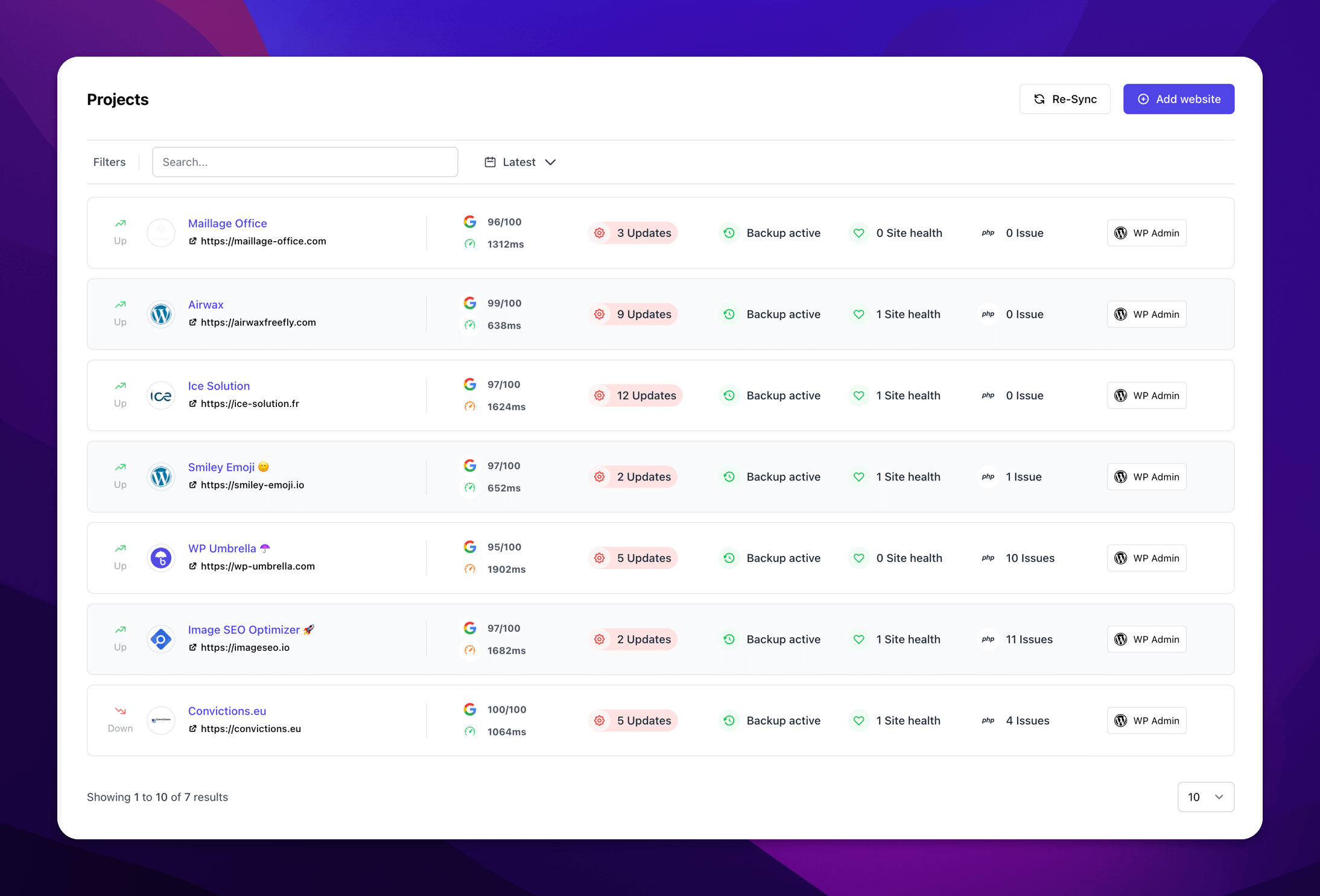
How to prepare your website for the new upgrade
Before you jump into all the new features, get your site read by:
1. Checking Plugin and Theme Compatibility
Outdated plugins and themes can cause problems or create conflicts with WordPress 6.8. So, take a moment to update what you can in your dashboard. Check the changelogs to confirm compatibility.
2. Backing Up Everything
Always back up your site before any major update. Create a full backup and save it in two places: locally and in the cloud. That way, you’ll be protected if anything goes wrong.
3. Testing on a Staging Site
Don’t test the new version on your live site. That’s just asking for trouble. Use a staging environment to trial WordPress 6.8 safely.
4. Updating Your PHP Version
Make sure your server is running a recent, stable version of PHP. WordPress 6.8 will work better with that. You can check and upgrade your PHP version from your hosting control panel.
5. Reviewing Custom Code
If your site uses custom functions or code snippets, give them a quick audit—especially anything inside `functions.php.` Look out for deprecated functions or outdated practices that might not work as expected in this release.
Conclusion
WordPress 6.8 focuses on practical improvements that make running your website simpler and more efficient. Whether it’s better page-loading speeds, stronger security, or improved editing tools, the update provides benefits without unnecessary complexity.
If you want to streamline your website management and improve overall functionality, upgrading to WordPress 6.8 is a sensible choice. If you want to explore some of the features of WordPress 6.8, click here.
Frequently Asked Questions about WordPress 6.8
WordPress 6.8 is set to release on April 15, 2025.
The earlier version, WordPress 6.7, was released on November 12, 2024.
